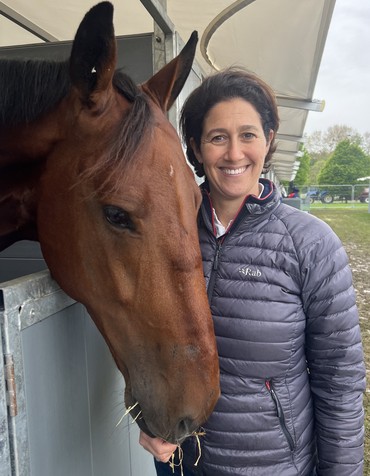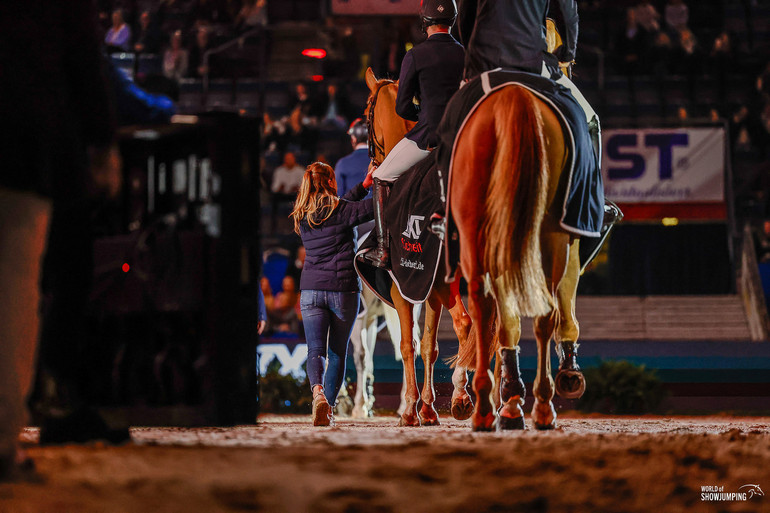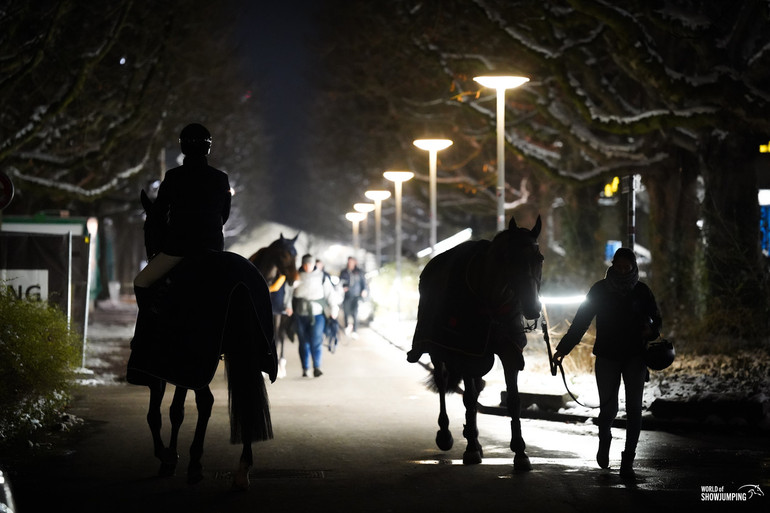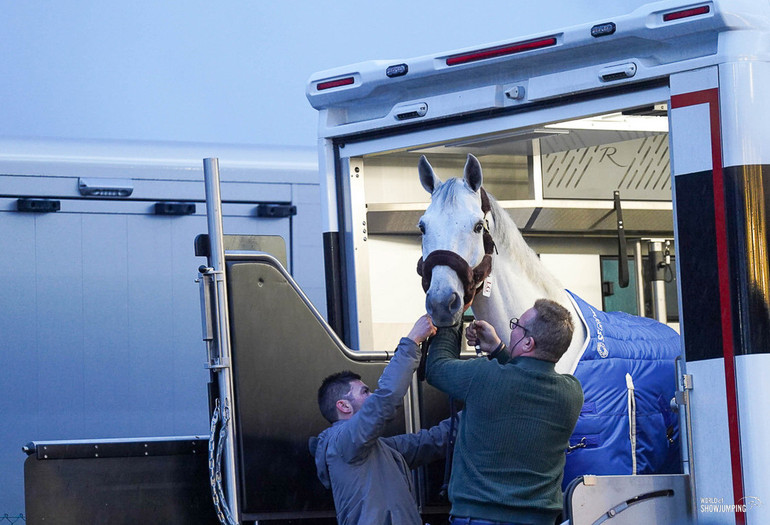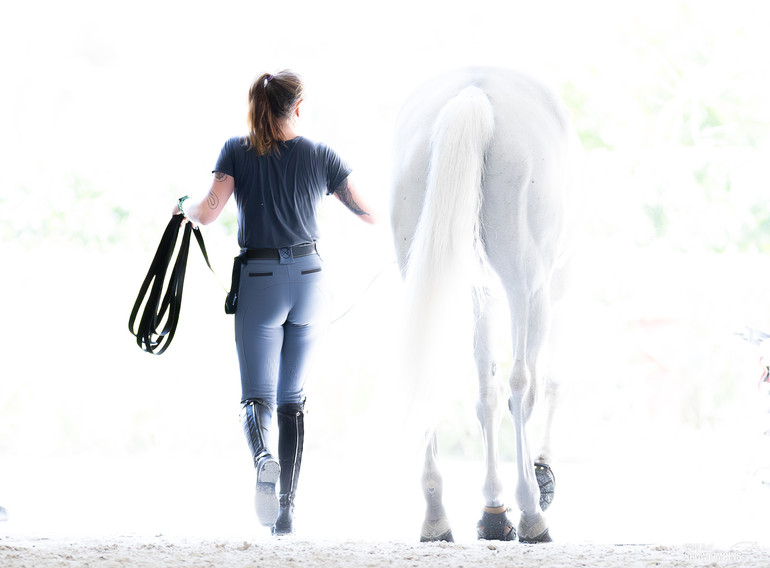Text © World of Showjumping
Once again, the rest hours for grooms and horses attending FEI events have become subject to discussion – this time at the 2025-edition of the FEI Sports Forum. The topic was brought up for debate during the session that focused on this year’s full revision of the FEI Jumping Rules.
For horses attending FEI events, rest hours are already regulated by the FEI Veterinary Regulations art. 1008 I 7 k). A change to these regulations, which came into effect on 1 January 2023, made it mandatory to close the FEI stables area for six consecutive hours overnight with minimal lighting and noise – to allow the horses to rest adequately. However, since the rule entered into force, there have been little, or no significant, changes at European-located FEI events – in particular not at those that need to be targeted, which are the indoor shows.
While the horses’ need for adequate sleep and rest is meant to be protected through the VR art. 1008, the grooms’ working hours are not specifically regulated in the FEI’s own framework. However, in the template for the FEI schedules it is clearly stated that: “Competitions must not start before 08:00 h and must not finish after 23:00 h, unless prior approval is granted by the FEI.” Schedules – including the programme of competitions – must be approved by the FEI, in accordance with its General Regulations art. 110.
Among the shows which are part of the FEI Jumping World Cup™ Western European League there is a pattern that illustrates how the programmes are on the boarder of, or beyond, the FEI’s own time limits.
Rest and sleep are considered critical elements of equine welfare
- FEI spokesperson -
At the 2024-edition of Helsinki International Horse Show, Saturday’s international Six Bar class started at 22.45. In Lyon, Thursday’s CSI5* 1.45m two-phase class began at 21.30 – with 96 horse-and-rider combinations at start. In Stuttgart, Friday’s CSI5* Stuttgart German Masters kicked off at 22.00. In La Coruna, Friday’s CSI5* 1.50m speed class started at 21.15. Jumping Mechelen scheduled Friday’s CSI5* BMW Masters to 21.30, while Sunday’s CSI5* Grand Prix began at 21.00. In Leipzig, Saturday’s CSI5* speed class kicked off at 21.25 followed by an international Six Bar competition at 23.00. In Amsterdam, Friday’s CSI5* 1.50m jump-off class started at 21.15, also the case for Saturday’s CSI5* Grand Prix. In Gothenburg, Thursday’s CSI5* 1.50m jump-off class began at 21.07, while Friday’s CSI5* 1.45m speed class started at 21.10.
These are just some of this winter-season’s examples of schedules that result in grooms repeatedly working to, or beyond, midnight at FEI events. Furthermore, it should be taken into account that more often than not, exercise times for flat riding or lunging are scheduled into the early hours of the morning due to limited space, which affect not only the grooms but also the rest times for the horses in the FEI stable area.
During the FEI Sports Forum, Lucy Katan – executive director of the International Grooms Association (IGA) – contributed with valuable input on behalf of the grooms, highlighting that late-night classes that finish beyond 23.00 is the rule rather than the exception during the FEI indoor season. Katan pointed out how the grooms at FEI events are regularly working 18 hours per day or more, leaving them burned-out, demotivated and dangerously exhausted.
“We need a change of culture,” Katan says to World of Showjumping about how the FEI indoor events in Europe are being scheduled.
For a second year running, the IGA and the Grooms Consultative Group (GCG) – the latter a consultative body used between the FEI and IGA – have submitted rule proposals to the FEI in the hope that the situation for the grooms, as well as the horses, can be improved. During last year’s FEI Rules Revision, the Grooms Consultative Group’s proposal to changes in the VR art. 1008 was rejected by the FEI with reference to the VR not being subject to full revision until 2026. “Meanwhile, the current rule will be applied," was the FEI’s response.
However, the past indoor season suggests – just like in 2023/2024 – that organisers are failing on the implementation of the VR art. 1008 I 7 k). Furthermore, there is plenty of evidence to illustrate how organisers don't respect the FEI's 23.00 time-limit – with many of the 2024/2025-season’s indoor shows running classes beyond 23.00. The consequence is that the grooms are working until midnight, or even later – depending on the finish of the prize giving ceremony – and that they are back at work between 05-07.00 in the morning to feed the horses in order for them to be flatted or lunged in accordance with the available slot times that the organisers offer. The result is several weekends per month where both grooms and horses end up without adequate rest and sleep.
The FEI’s approach continues to prioritise cooperation, monitoring, and education to ensure standards are upheld
- FEI spokesperson -
Yet again attempting to address these issues, the IGA and GCG have this year proposed to the FEI to change the Jumping Rules. Suggesting a new article in the Jumping Rules, the IGA and GCG have proposed that classes at FEI events should not begin before 8.00 and should be concluded – prize giving included – by 23.00 at the latest. Additionally, they suggest that there should be a minimum of 10 hours between the end of the last class horses have jumped in and the start of those horses’ first class the next day (i.e. a horse that competed in the last class, terminated at 23.00 cannot compete before 9.00 the following day).
Furthermore, the IGA and GCG have suggested a change to the Jumping Rules article 248.5 – which regulates individual placing and prize giving – proposing that only the top three placed riders are required to attend mounted prize giving ceremonies held after 22.00.
“As to our rule proposals, we believe that the benefit of changing the FEI JR art. 248.5 is that five grooms will be saved every night from having to wait for their horses to finish the prize giving,” Katan explains. “The “bad news” is of course that if your rider is in the top three every single night, you could always be the last groom in the stable – but we can’t help that. I do believe that such a change could make a difference.”
“Perhaps it would also be an idea for the grooms that are finished earlier to lend a helping hand to those that are done later, and for the riders that don’t have any post-competition press or sponsorship obligations to assist their grooms with the work in the stables,” Katan adds.
“It’s all about the scheduling,” Katan points out when addressing how to possibly solve the situation, and provide adequate rest hours for horses and grooms. “Because the schedules are not mindful of the 11 PM total finish, which is the rule proposal that we have now put forward, it becomes impossible for 1) the stables to close according to the FEI VR, and 2) for the grooms to get adequate rest and sleep. There are exceptions of course, as we have seen this winter, where OCs make their programs work for everyone involved including grooms, horses and riders – even across disciplines. In the IGA’s opinion, the only solution is to sort out the scheduling.”
“Furthermore, if combining classes and prize giving ceremonies that end after 23.00 with FEI officials actually enforcing the VR art. 1008, the grooms are forced into not finishing the caring routine they have for their horses,” Katan points out. “The grooms are being asked to rush by the stewards who are there to follow up on the closure of the stables, which then ultimately affects the wellbeing of the horses who have extensive post-competition routines after jumping big courses. But, if the class and prize giving have not been finished on time, how can the grooms finish on time?”
In the IGA’s opinion, the only solution is to sort out the scheduling
- Lucy Katan, IGA -
“We continue to work collaboratively with the FEI to address scheduling concerns,” Katan says. “Of course, schedules are approved at FEI headquarters and I know the FEI are aware of this issue so I think we will see it changing.”
When World of Showjumping asked the FEI which sanctions are available to them if an organising committee does not adhere to the 23.00 time-limit, or the requirement on mandatory overnight closure of the stables in the VR art. 1008 I 7 k)., an FEI spokesperson replied: “While the Veterinary and Discipline regulations do not include specific sanctions in the event of a breach of the overnight stable closure rule, all reported cases are followed up directly with the Organiser to address the issue and to ensure future compliance. In cases of repeated non-compliance, the FEI retains the right to remove an event from the calendar. The FEI’s approach continues to prioritise cooperation, monitoring, and education to ensure standards are upheld.”
On the question of whether there are any annual statistics available that would help track how many approvals are granted by the FEI headquarters to finish outside the time-limit of 23.00, the spokesperson said: “Where scheduling exceptions are requested, these are reviewed on a case-by-case basis, but data on approvals is not formally tracked, as competition end times are not consistently reported by Organising Committees with their results.”
“Passing responsibility from one stakeholder group to another won’t solve the issues,” Katan says about the returning phrase that as employers, the riders are responsible for their grooms’ working hours. “However, if we can work together with the show organisers to resolve the scheduling by making very small adjustments, the problem can be solved for both grooms and horses.”
“It’s the whole culture of the indoor shows that needs to change, but of course we have to acknowledge the complexity the organisers are facing of fitting everything into the program,” Katan says. “I suppose they put the feature class of the day as the last competition thinking they will keep people at the venue, also spending money on food and beverages, whereas if they put a display towards the end, they are worried losing a certain amount of spectators that are more interested in the sport than entertainment. There are shows that manage to balance this well though, and they should be looked to as good examples.”
It’s the whole culture of the indoor shows that needs to change
- Lucy Katan, IGA -
“For the grooms to work in shifts is not realistic, because there are many other elements to consider,” Katan points out about one suggestion made at the Sport Forum by one of the panellists – with reference to how it’s done in the event industry. “If you are going to work shifts, you will – if we are speaking about World Cup indoor shows – as a rider have to bring two grooms for two-three horses, and let’s just be realistic: Riders are not going to do that. It would mean they or the show organisers would have to accommodate and cater for two members of staff, which will result in considerable additional costs – plus you are reducing your staff at home. It’s of course different if you bring four-five horses to a show, then there should definitely be two grooms sharing the work.”
“That being said, the riders – as employers – have a responsibility to employ their grooms by the law,” Katan points out. “Therefore, they need to look at the working hours of their grooms and they need to be flexible to ensure that their grooms get the rest they need. The rider should when possible after a late finish the previous night, schedule the groom to have some genuine downtime away from the stable to rest and sleep the following day – and not just under a rug in the chair next to the horses, because that’s not quality sleep. The riders need to be mindful of their grooms’ working day, and make a proper agenda that considers the grooms’ need and right to rest and sleep.”
“What I do think really needs to change, and that has to become far more common, is to book a driver,” Katan says. “I think the sensible riders are really starting to do this now; the groom is the groom, and the driver is the driver – they each have their role. I think if you are running a professional set-up, you need to book a driver for the shows, for the safety and well-being of your groom and your horses – not to forget the legality of it. I would not want a groom who has been working all these hours, drive for another further ten hours through the night – it’s mad to ask that. What if there was a fatality accident where the groom was so tired that he or she fell asleep at the wheel, and killed somebody else? I think this matter must be taken very seriously.”
I think this matter must be taken very seriously
- Lucy Katan, IGA -
“Riders need to build a driver into their costs, and it should become more talk about this becoming the norm,” Katan says. “Shows should be able to accommodate for the drivers too, with accreditations, hot-meal vouchers and shuttles when needed.”
“I think it’s quite short-sighted,” Katan says about the culture of late-night classes during the indoor season. “Many of the leading equestrian nations spend so much on performance analysis, but they are not analysing the subject of adequate sleep enough. On the note of social license, I also don’t think it looks good – jumping the horses so late into the night.”
When asked whether the FEI considers adequate rest and sleep for horses attending FEI events to be part of its welfare strategy, the FEI spokesperson answered: “Rest and sleep are considered critical elements of equine welfare. While not listed as a specific item in the Equine Ethics and Wellbeing Commission’s Action Plan — given the rule already existed — rest and sleep remain central to the FEI’s overall efforts to provide a good life for horses in sport.”
On the note of social license, I also don’t think it looks good
- Lucy Katan, IGA -
And as for the grooms…? “I believe we still will have grooms wanting to come in and do the job – thinking it’s great in the beginning. However, the longevity of those grooms is what we have to look closer at,” Katan highlights. “Most reach a point where they just can’t do it anymore, neither mentally nor physically. And that’s why we are losing out on so many experienced grooms, because they just end up leaving the industry all together.”
Noteworthy, the issues highlighted by the IGA might have even more far-reaching consequences – which should be taken into consideration by the FEI and its stakeholders. A recent study by Susanna L. Ole and Inga A. Wolframm titled ‘What Does It Take? Changing the Tide on Staffing Issues in the Equestrian Industry’ explains how closely the grooms’ working situation is linked to equestrian sports’ social license to operate. “Studies have shown that poor working conditions, high turnover rates, and staffing shortages negatively impact horse welfare, which, in turn, affect industry legitimacy and SLO,” Ole and Wolframm write in the study. “Given that workforce stability is essential for maintaining public trust in the equestrian sector, the long-term sustainability of the industry depends on ensuring that grooming remains a viable profession.”
17.4.2025 No reproduction of any of the content in this article will be accepted without a written permission, all rights reserved © World of Showjumping.com. If copyright violations occur, a penalty fee will apply.




